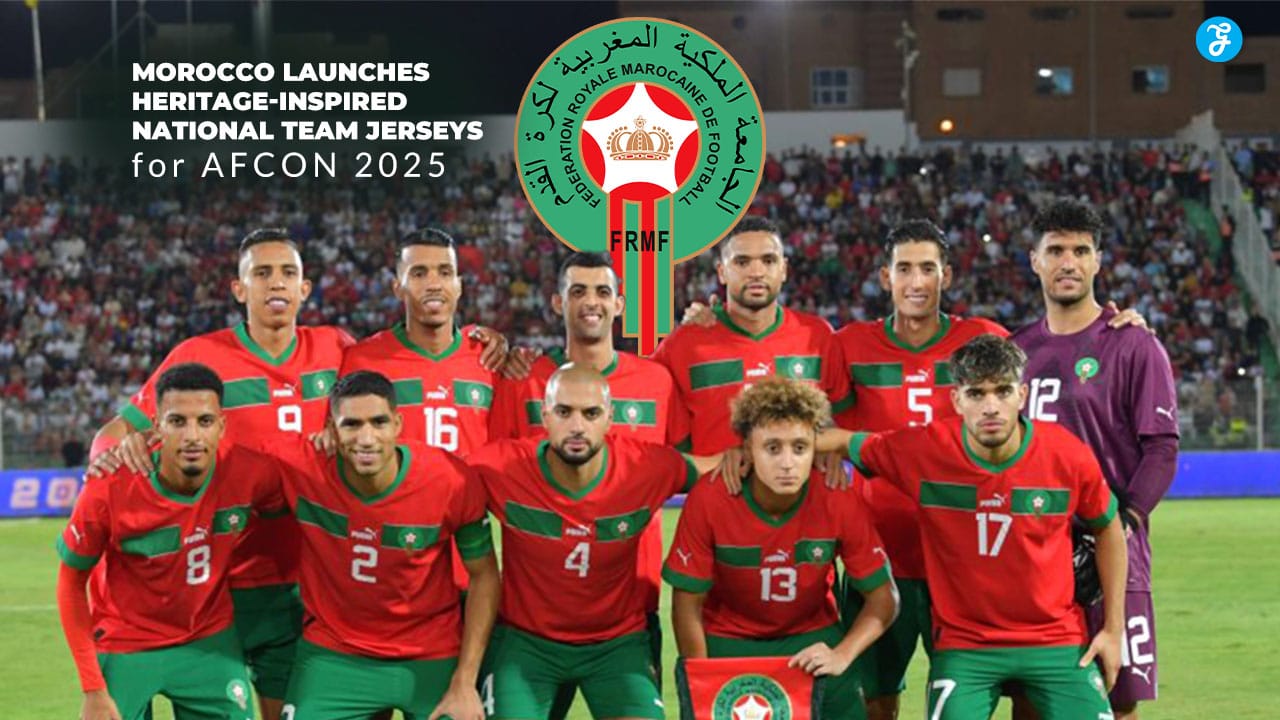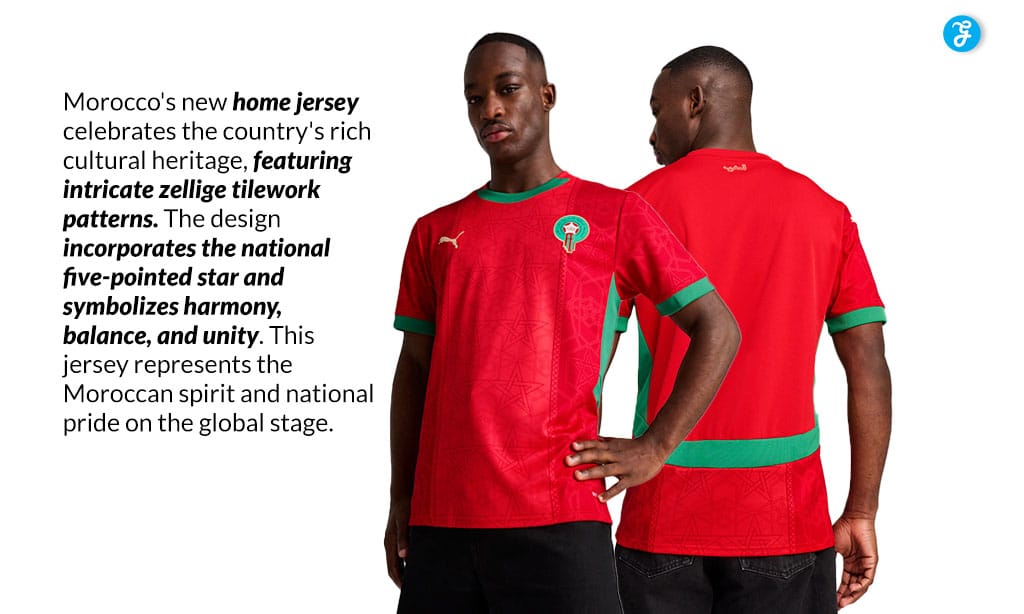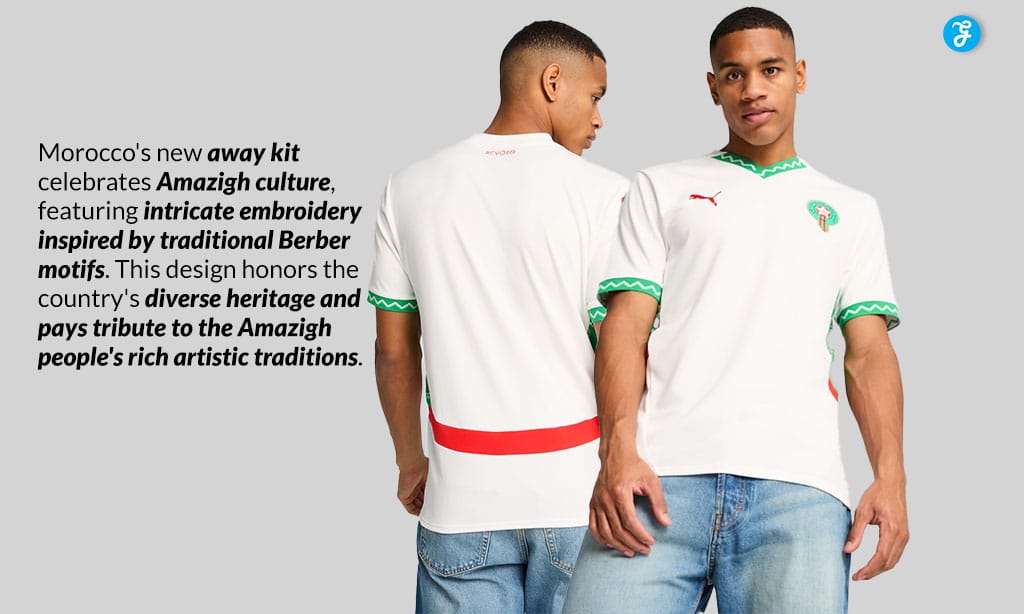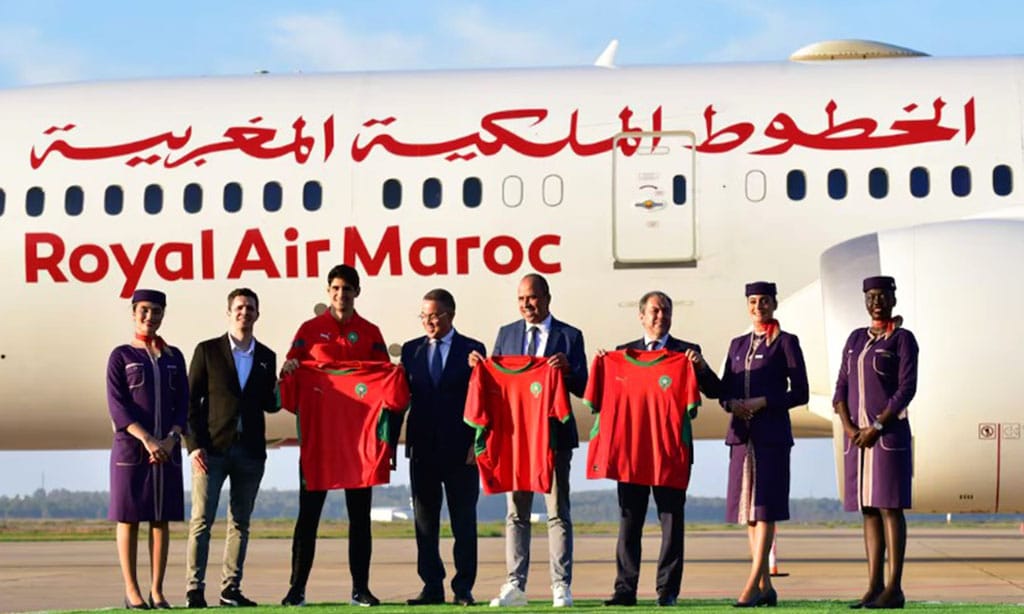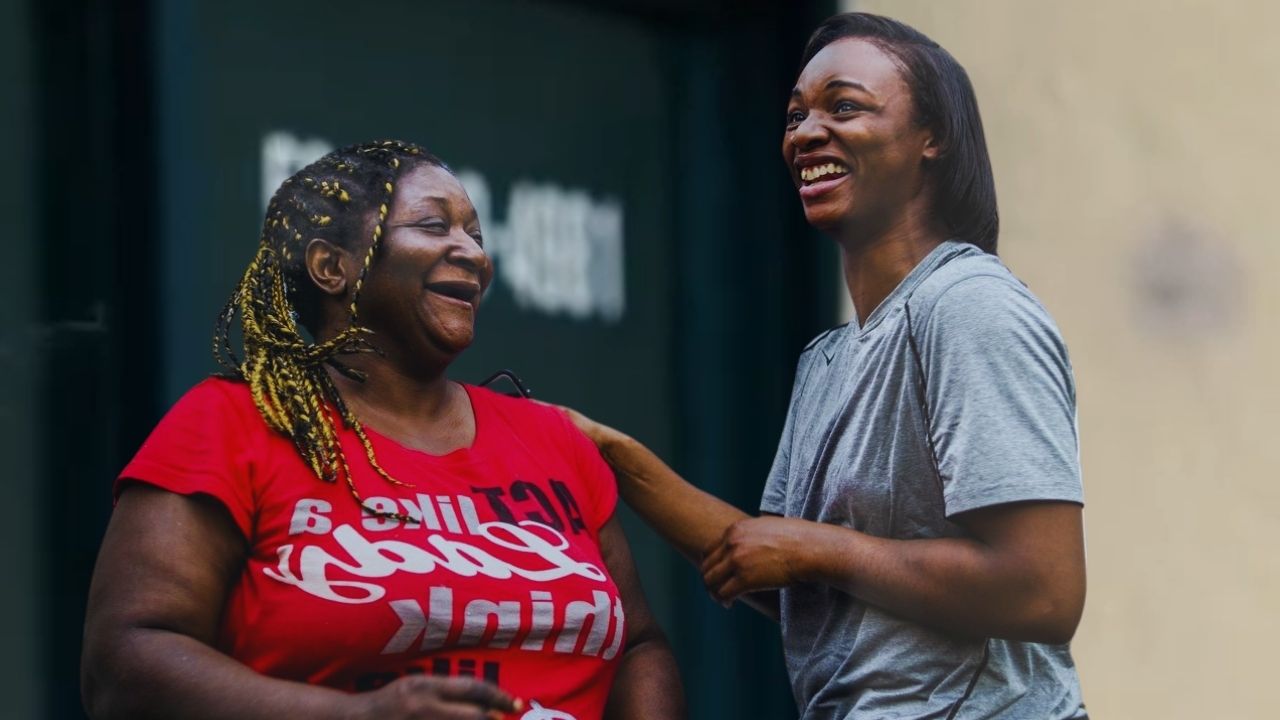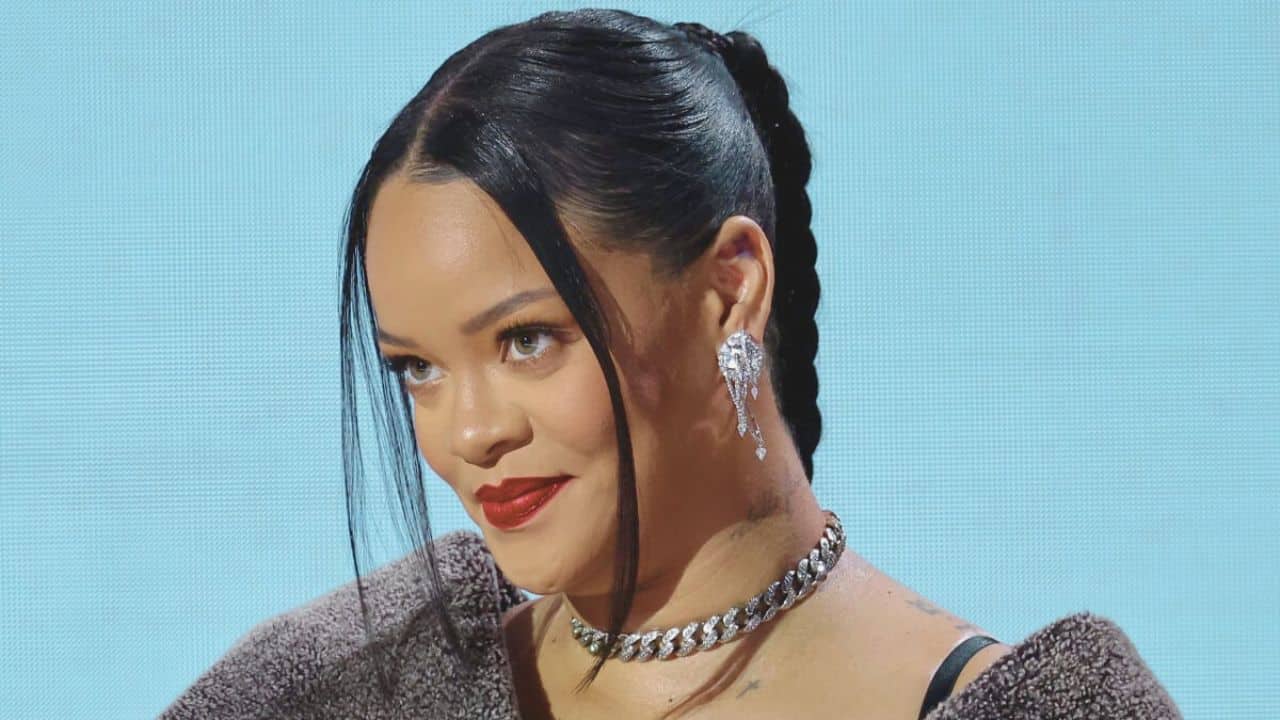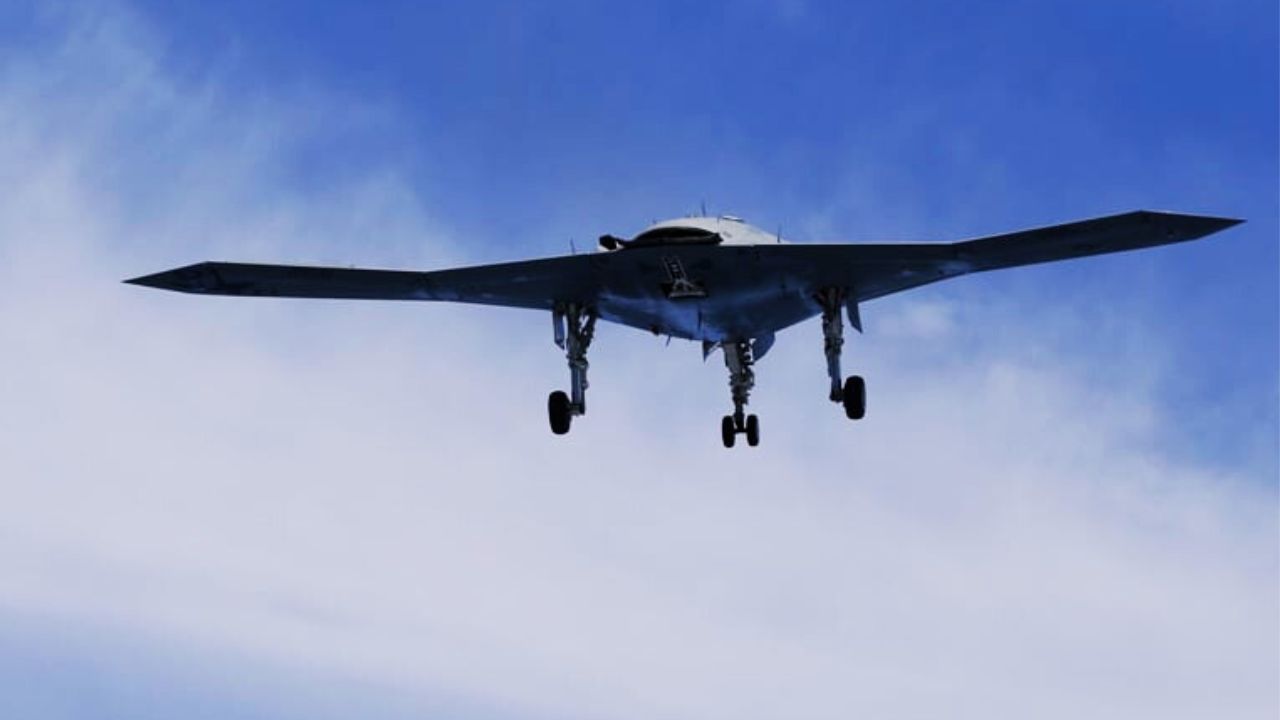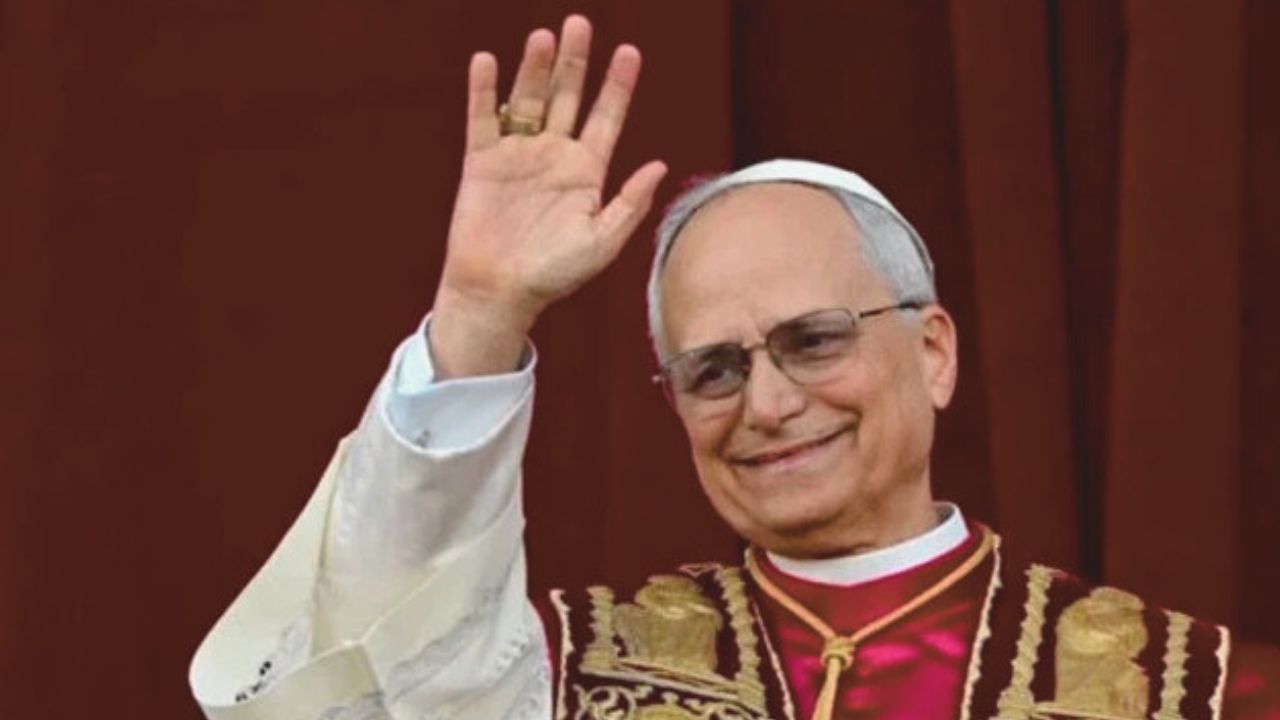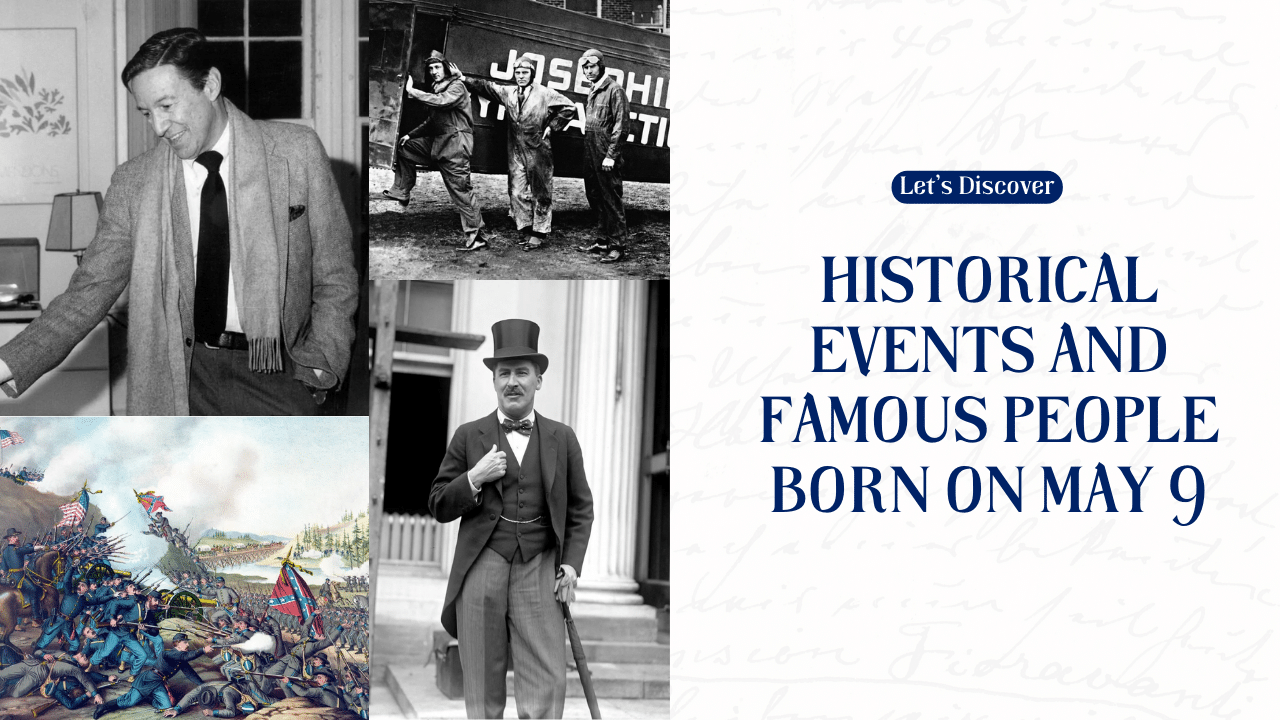As Morocco gears up to host the 2025 African Cup of Nations (AFCON), the country recently launched its newly designed national team jerseys, meticulously crafted to reflect Moroccan heritage and cultural pride. Presented by the Royal Moroccan Football Federation (FRMF) in collaboration with Royal Air Maroc (RAM), sports retailer Planet Sport, and global sportswear brand Puma, the new kits represent a fusion of Moroccan history, art, and contemporary sportswear design. Spearheaded by Moroccan designer Abderrahmane Trabsini, the jerseys have been designed to capture elements deeply tied to Morocco’s identity, making them not only functional for athletes but also meaningful symbols of Moroccan heritage.
Home Kit: Celebrating Morocco’s Iconic Zellige Tilework
The home jersey design is a tribute to one of Morocco’s most cherished art forms—zellige tilework. This style of tilework, marked by its intricate and colorful geometric patterns, is deeply rooted in Moroccan architecture and dates back centuries. The home kit prominently features motifs inspired by zellige tiles, each pattern carefully chosen to evoke Moroccan art and craftsmanship. The center of the jersey displays Morocco’s five-pointed star, a revered national symbol from the Moroccan flag, symbolizing the country’s unity, cultural heritage, and pride.
Zellige designs are not only decorative; they also carry symbolic meanings in Moroccan culture, often representing harmony, balance, and the interconnectedness of life—values the Moroccan team hopes to embody on the field. The FRMF stated that this design approach not only honors Morocco’s rich cultural legacy but also aims to represent the national spirit in a form that will resonate with both Moroccan fans and international viewers alike.
Away Kit: An Homage to Morocco’s Amazigh Roots and Traditional Craftsmanship
The away kit delves into Morocco’s diverse cultural history by focusing on Amazigh, or Berber, influences. The Amazigh people are indigenous to North Africa and have a distinct culture, language, and art style that holds a vital place in Moroccan identity. For this jersey, Trabsini incorporated Amazigh-inspired motifs and embroidery techniques, a nod to Morocco’s deep connection to its indigenous roots. The intricate designs pay homage to Amazigh artisanship, which includes textiles, metalwork, and pottery adorned with symbolic geometric patterns.
These patterns have been interpreted through embroidery on the away kit, creating a tactile and visual link to the Amazigh traditions that are still cherished across Morocco. According to the FRMF, this jersey honors Morocco’s multicultural background, making it an especially meaningful design for Moroccans of Amazigh heritage and a source of pride for all Moroccans, celebrating the diversity that defines the nation’s identity.
Color Palette and Language: National Flag Colors and the Tifinagh Script
The color scheme across both jerseys is deliberate and symbolic, using the red and green palette of Morocco’s national flag. Red and green have long represented Morocco, with red signifying strength, bravery, and valor, and green symbolizing hope, peace, and prosperity. By incorporating these colors, the FRMF and its partners aim to embody Morocco’s national pride and patriotic spirit.
In addition, both jerseys feature the Tifinagh script, an ancient writing system used by the Amazigh people. The inclusion of Tifinagh reflects Morocco’s recognition of its indigenous culture and serves as a celebration of the linguistic diversity within the nation. This detail, positioned subtly on the back of the jersey, signifies Morocco’s commitment to honoring its historical roots while embracing a modern, inclusive identity.
A Symbolic Launch Event at Rabat-Salé Airport: Boosting Tourism and National Pride
The unveiling of the new jerseys took place in a high-profile event at Rabat-Salé Airport, designed not only to celebrate the Moroccan team but also to promote Morocco’s appeal as a travel destination. This event included representatives from the FRMF, RAM, Puma, and key tourism officials who highlighted the symbolic significance of these jerseys. They emphasized that with Morocco set to host the 2025 AFCON, the jerseys would serve as a key visual icon, symbolizing Morocco’s cultural and artistic heritage for the global audience.
To expand this promotional campaign, Royal Air Maroc announced a unique initiative: for two days, flight crews on select RAM flights and ground staff at various Moroccan airports will wear the new jerseys, further showcasing the designs to both domestic and international travelers. High-traffic airports such as those in Casablanca, Marrakech, Dakhla, Laâyoune, and Oujda are participating in the initiative, as well as RAM stations at international locations, including Paris, London, Milan, New York, Barcelona, Frankfurt, and Dakar. This campaign aims to present Morocco’s culture and identity through its national airline’s team, sparking interest and fostering admiration among travelers for Morocco’s rich heritage.
The Significance of Zellige: Reflecting on Past Controversies and Cultural Identity
The decision to incorporate zellige motifs into the Moroccan jerseys also serves as a statement of cultural pride, particularly given the sensitivity around these designs in recent years. In 2022, controversy arose when international sportswear giant Adidas used Moroccan zellige motifs on jerseys designed for the Algerian soccer team. Morocco’s Ministry of Youth, Culture, and Communication expressed concerns, claiming the use of zellige was an act of cultural appropriation. This led to public outcry in Morocco, where zellige is viewed as a uniquely Moroccan art form with centuries-old roots in Moroccan and Islamic architecture. Adidas ultimately responded by withdrawing the design and issuing an apology, acknowledging the cultural significance of zellige to Morocco.
This incident underscored the importance of preserving and respecting Moroccan cultural symbols, especially within the context of global sports. By reclaiming zellige patterns on their own national team jerseys, Morocco emphasizes its rightful ownership of these cultural symbols, presenting them as part of the country’s visual identity. This is not just a design choice; it’s a reaffirmation of Morocco’s cultural heritage and a clear statement on the importance of cultural respect in sports and fashion.
A Celebration of Heritage, National Unity, and the Power of Sports as a Cultural Platform
The new Moroccan jerseys are more than just athletic apparel—they represent Morocco’s heritage, unity, and pride on a global platform. With the upcoming AFCON tournament on Moroccan soil, these jerseys are expected to resonate deeply with the Moroccan public and draw admiration from international fans. The jerseys embody the nation’s respect for its own history and multiculturalism, bringing together influences from both Arab and Amazigh traditions to create a harmonious blend that honors all facets of Moroccan identity.
In launching these kits, Morocco sends a message that sports can be a powerful vehicle for cultural expression and national pride. The designs honor both the artisans and the athletes, showcasing Morocco’s strength, resilience, and beauty. With these jerseys, Morocco aims not only to inspire its national team but also to share its culture with the world, making the 2025 AFCON a celebration of both athletic excellence and cultural heritage.
The Information is Collected from ESPN and Yahoo.


